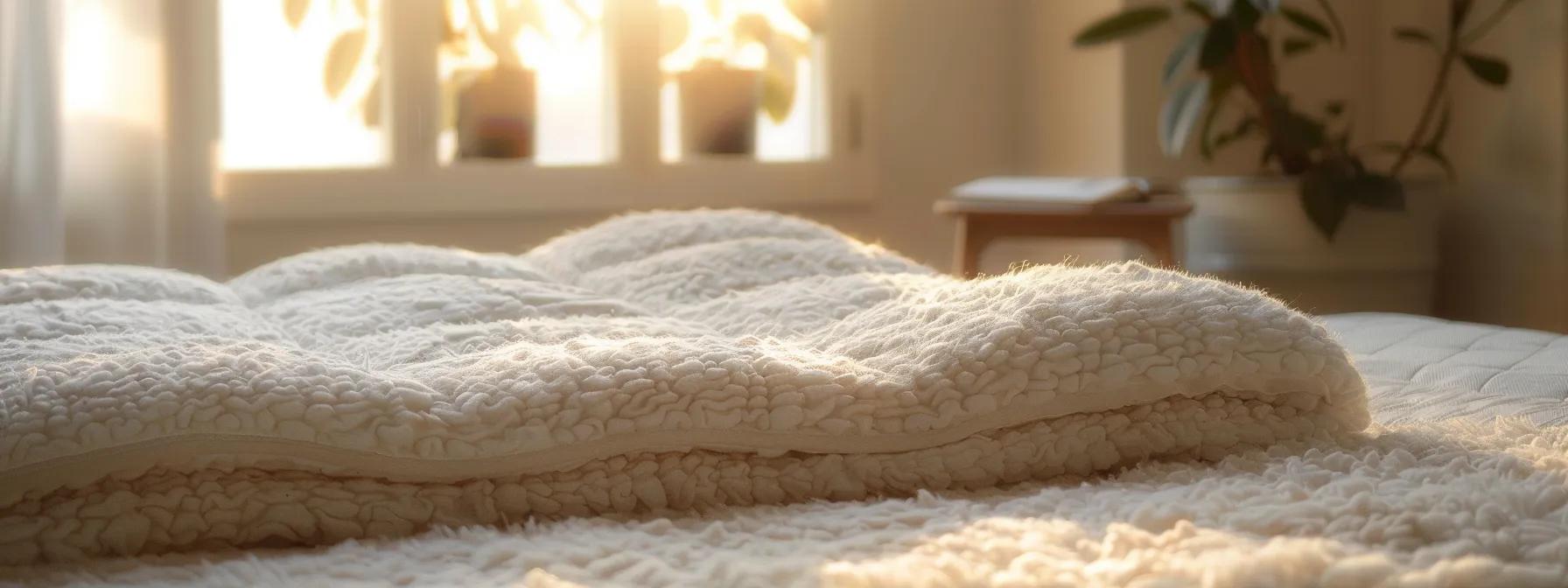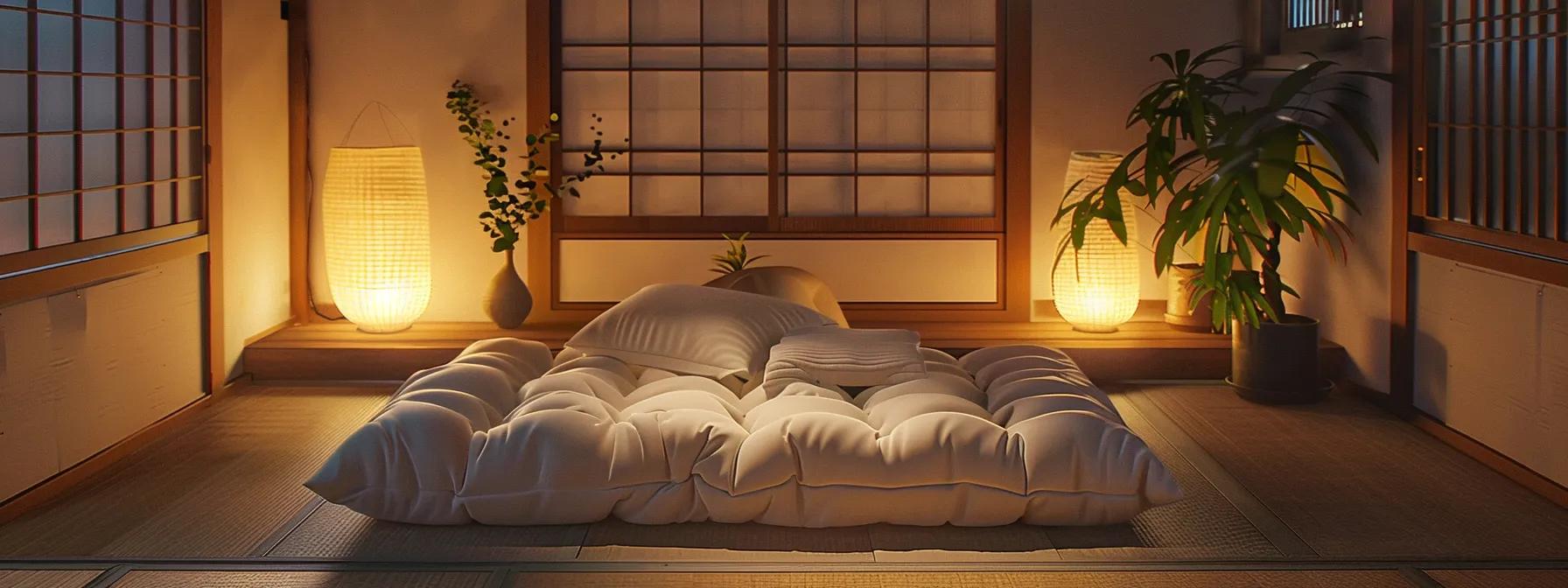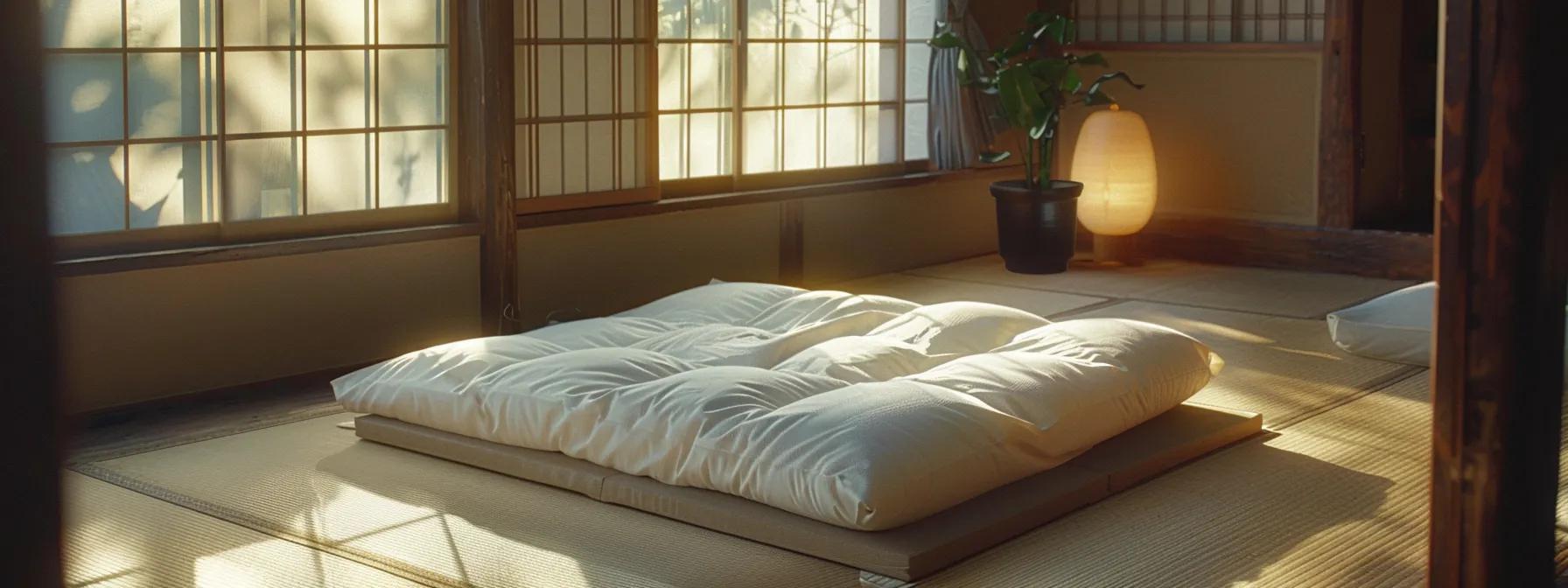Bedding
What Factors Contribute to the Comfort of a Futon Mattress?
Table Of Contents:
- Understanding What Makes a Futon Mattress Comfortable
- Key Features to Look for in a Comfortable Futon Mattress
- Best Futon Mattresses for Comfort
- How to Maximize Comfort With a Futon Mattress
- Common Comfort-Related Issues With Futon Mattresses
- Frequently Asked Questions About Futon Mattress Comfort
When it comes to choosing a futon mattress, comfort is often a primary concern for many buyers. With various options available, understanding what contributes to a comfortable futon mattress can significantly enhance your experience. This article will cover key features that influence comfort, how to maximize the comfort of your futon, and common issues you might encounter. By addressing these points, you’ll equip yourself with the necessary knowledge to select the right futon for your needs, ensuring you enjoy restful nights while fitting seamlessly into your interior design. Don’t let dust and discomfort spoil your sleep—explore the tips to find the perfect futon mattress on sale now.
Understanding What Makes a Futon Mattress Comfortable

When considering your next comfortable affordable futon on sale now, several factors contribute to its overall comfort. You need to understand the role of materials in comfort, the importance of mattress thickness, and the impact of foam and support structure. Additionally, the significance of cover fabrics cannot be overlooked, as they affect both feel and durability. Let’s explore these elements in detail to ensure you make an informed decision for your bed base or bed frame.
The Role of Materials in Comfort
The materials used in futon mattresses play a critical role in providing comfort. For instance, the inclusion of polyester in various layers can enhance softness and create a plush feel, making your sleeping experience more enjoyable. Additionally, the construction of the mattress impacts its ability to adapt to your body shape, thereby offering support where it’s needed most.
The height of a futon mattress is equally important, as a thicker build can often lead to enhanced comfort. A mattress that is adequately thick can act as a barrier between you and the bed frame or floor, reducing pressure points and allowing for a better night’s sleep. When selecting a futon, consider how the height of the mattress aligns with your expected uses, whether for sleeping, lounging, or both.
A well-crafted quilt on the outer layer not only contributes to the aesthetic appeal but also aids in the overall comfort. Quality quilting can ensure that the materials inside are evenly distributed, preventing lumps that could disrupt your relaxation. When choosing a comfortable futon, pay attention to the quality of both the interior components and the quilted cover, as they collectively influence your experience:
- Evaluate the materials for softness and durability.
- Consider the height for optimal support.
- Inspect the quilting for a uniform feel.
Importance of Mattress Thickness
The thickness of a futon mattress plays a significant role in overall comfort, particularly when it comes to offering adequate support. A thicker mattress can provide better cushioning, helping to alleviate pressure points that may lead to discomfort during sleep. For those seeking the comfiest futon mattress experience, opting for a hybrid design that combines plush layers with firm support is essential.
In addition to comfort, mattress thickness influences how well the mattress adapts to your body. Memory foam used in thicker futon mattresses can contour to your unique shape, promoting proper spinal alignment. This feature is particularly beneficial for individuals with back pain, as it minimizes pressure against vulnerable areas of the body.
Selecting the right thickness for your futon mattress is crucial based on your intended use. If the futon will serve as a primary sleeping surface, a thicker mattress is advisable to ensure long-lasting comfort. Consider the following guidelines when choosing the thickness of your futon mattress:
- Opt for at least 8 to 10 inches for optimal support.
- Choose a thicker option if you plan to sleep regularly on the futon.
- Ensure the materials used, such as memory foam, enhance the plush feel.
Impact of Foam and Support Structure
The foam used in a futon mattress plays a vital role in ensuring comfort during sleep. High-density foam offers support and relief from pressure points, which is particularly beneficial for those experiencing pain. When choosing a mattress pad, look for one that features a combination of foam types to balance softness and firmness, providing a restful night.
The support structure of a futon mattress greatly influences your overall sleep quality. A well-designed support system can enhance the mattress’s ability to cradle your body and promote alignment, reducing the risk of discomfort and pain. Selecting a mattress with a robust core, such as innerspring or high-density foam, will ensure you receive the necessary support for a good night’s sleep.
Understanding the relationship between foam and support can help you make an informed choice about your futon mattress. With various options available, prioritizing your needs, such as pain relief and comfort, will lead you to a mattress that meets your expectations. Consider testing different combinations to find the perfect balance for your sleeping habits:
The Significance of Cover Fabrics
The cover fabric of your futon mattress plays a significant role in its overall comfort level. Choosing materials like organic cotton can enhance your sleeping experience by providing a soft, breathable surface that is gentle against the skin. These fabrics matter, especially for those who may have sensitivities or allergies, as they promote a healthier sleep environment in your bedroom.
Durability is another key factor to consider, as the cover fabric must withstand daily use without losing its aesthetic appeal or comfort. Opting for cover fabrics in versatile colors, such as grey, can easily match your bedroom décor while being practical for regular maintenance. This can save you the hassle of frequent replacements, allowing you to focus on enjoying restful nights.
Moreover, the right cover fabric contributes to temperature regulation, ensuring you remain comfortable throughout the night. Fabrics that wick moisture away can help you stay cool, addressing any discomfort caused by heat during sleep. For the best results, focus on selecting a high-quality fabric that aligns with your preferences, and don’t hesitate to reach out if you have questions—providing your email address can be a quick way to get further assistance from knowledgeable sources.
Comfort is more than just a feeling; it is built on key elements. Understanding these features will guide you in choosing the right futon mattress for rest and relaxation.
Key Features to Look for in a Comfortable Futon Mattress

When choosing a futon comfortable mattress, it’s vital to assess firmness levels to match your preference. Evaluating breathability and temperature regulation ensures a restful sleep, while edge support enhances stability for sitting or lounging. Additionally, understanding how your sleep position affects comfort will help you select the perfect cheap comfy futon that meets your needs, whether it’s made with cotton or other environmentally friendly materials.
Assessing Firmness Levels
When selecting a futon mattress, assessing firmness levels is vital to meet your personal comfort needs. Softer mattresses may work well for lighter individuals, while a firmer option is typically better suited for those with greater weight. This balance promotes a restful sleep experience, especially crucial if you plan to use the futon as the best futon for everyday sleeping in a dormitory or guest room.
Your sleeping position also influences the ideal firmness of your mattress. Side sleepers often benefit from a softer mat that adapts to their body contours, reducing pressure on the shoulders and hips. In contrast, back or stomach sleepers usually prefer a firmer mattress that supports proper spinal alignment, preventing the body from sinking too deeply.
To find the right mattress firm for your needs, consider testing various options. Take the time to lie down and assess how the mattress feels in multiple positions. This hands-on approach enables you to identify which firmness aligns with your comfort preferences, ensuring you make a well-informed decision that enhances your overall sleep quality.
Evaluating Breathability and Temperature Regulation
Evaluating breathability and temperature regulation is essential when choosing a comfortable futon mattress. Fabrics that allow air circulation, such as natural wool, can help wick away moisture, ensuring you stay dry and comfortable throughout the night. This is particularly crucial if you expect to use the mattress for long durations, whether for lounging during the day or as a primary sleeping surface at night.
The thickness of your futon mattress also contributes to its overall comfort by influencing how well it regulates temperature. A mattress that is around 8 to 10 inches thick, combined with breathable materials, promotes airflow, preventing overheating during sleep. When using the mattress on a tatami mat, this combination can enhance breathability, making your sleeping environment more enjoyable.
Consider your sleeping position when assessing breathability and temperature control. Stomach sleepers may benefit from a firmer mattress that provides adequate support while still allowing for ventilation. Selecting a futon mattress with these features can enhance your overall comfort, making it easier to achieve restorative sleep without worrying about excessive heat or moisture buildup.
Importance of Edge Support
Edge support is a critical factor in the comfort of a futon mattress, particularly for those who often sit on the edge. A robust edge support system helps prevent sagging, which can lead to discomfort, especially in living room settings where you might need to sit or lounge. By choosing a futon with reinforced edges, you not only enhance the overall comfort but also extend the mattress’s lifespan, reducing the need for frequent replacements.
High-density foam or innerspring constructions provide the necessary support that contributes to better edge stability. When selecting your futon, take note of how the edge support feels during use. You want a mattress that maintains its shape while allowing you to sit easily without rolling off or feeling unsteady. A well-supported edge can also aid in preventing moisture buildup, creating a healthier environment for relaxation.
Incorporating materials like twill in the fabric can enhance the durability of your futon, complementing the importance of edge support. Ensuring that your mat features quality construction will not only improve comfort but also match your style preferences. Whether you’re researching the best futons wirecutter recommends or choosing based on personal taste, prioritize edge support for the best overall experience.
The Function of Sleep Position on Comfort
Your sleep position significantly affects your comfort on a futon mattress. For side sleepers, a futon with a comfortable mattress that offers adequate cushioning is crucial to support the hips and shoulders. These areas need gentle pressure relief to prevent discomfort, so selecting a futon made with materials like fiber or thick linen can enhance your sleeping experience.
If you tend to sleep on your back, a firmer futon is typically more suitable. This allows for proper spinal alignment, ensuring that your back is supported without sinking too deeply. A futon mattress designed with high-density foam can provide the necessary support, helping to alleviate any strain you might feel if your mattress is too soft.
Your sleeping habits also play a role in determining the best futon for your needs. If you use your futon for lounging, opt for one that maintains comfort whether you sit or lie down. Combining different materials in the construction, such as plush fiber and durable linen, can create a versatile cushion that adapts well to various positions, ensuring both relaxation and support throughout your day and night.
Now that you know what to seek in a futon mattress, let’s look at the best options available. Each choice brings comfort, ensuring your rest is as peaceful as it should be.
Best Futon Mattresses for Comfort

Your search for the best futon mattresses for comfort starts here. We will highlight top picks known for exceptional comfort, comparing materials such as latex and metal to help you make an informed decision. Additionally, customer reviews and testimonials will shed light on real-world experiences, ensuring you find the right mattress for a restful night’s sleep, whether you’re considering a futon or an air mattress option.
Top Picks for Exceptional Comfort
When selecting a futon mattress known for exceptional comfort, you might consider one that features memory foam. This material contours to your body, providing optimal support and pressure relief, essential for a restful sleep in your room. Brands that offer memory foam options often receive positive feedback for comfort, making them ideal choices for those who prioritize quality.
Another excellent option is a futon mattress designed specifically for use as a murphy bed. These mattresses tend to be thicker and more supportive, ensuring you get a good night’s sleep even when the mattress is folded up during the day. Look for features like breathable fabrics that regulate temperature and materials that resist wear and tear, allowing you to count on your futon for comfort over time.
It’s worth considering a futon that includes a soft, durable blanket for added coziness. A comfortable blanket can enhance your overall sleeping experience, especially during colder months. Choose a brand that combines these elements to craft a versatile sleeping solution that meets your needs, whether you’re unwinding after a long day or hosting guests in your space:
Comparative Analysis of Materials Used
When evaluating futon mattresses, the choice of materials can significantly influence comfort levels. Memory foam is known for its ability to adapt to your body shape, providing targeted support and pressure relief. This material is particularly advantageous for those experiencing discomfort while sleeping, as it contours to your form, ensuring better spinal alignment throughout the night.
In contrast, innerspring futons offer a traditional feel with more bounce, which some individuals may prefer. The coil structure allows for excellent airflow, promoting ventilation that helps regulate temperature during sleep. If you often feel overheated at night, an innerspring model could be a suitable option to maintain comfort without compromising support.
High-density foam is another reliable choice, offering a blend of firmness and durability. This material helps maintain the mattress’s shape over time while providing adequate support for various sleep positions. Your specific sleeping habits will play a crucial role in determining which material best meets your needs, ensuring you find the most comfortable solution for your futon mattress.
Customer Reviews and Testimonials on Comfort
Customer feedback often highlights the importance of comfort in selecting a futon mattress. Many users report that a well-constructed memory foam futon provides excellent pressure relief, making it a preferred choice for individuals experiencing discomfort during sleep. The positive experiences shared in testimonials emphasize how vital it is to choose materials that adapt to your body shape for an enhanced sleeping experience.
In addition to material quality, customers frequently mention the significance of thickness in determining comfort levels. Reviews reveal that thicker futon mattresses are commonly praised for their ability to provide better support and cushioning, preventing users from feeling the bed frame or floor beneath them. This aspect is essential, particularly for those using their futon as a primary sleeping surface.
Practical insights from user experiences can guide you in making a more informed decision. Many reviews and testimonials suggest testing various options to find the best fit for your individual sleep position and preferences. Understanding the collective opinions from fellow customers can be invaluable as you navigate your choices for a futon mattress that meets your comfort needs:
- Memory foam options offer superior pressure relief.
- Thicker mattresses generally provide enhanced comfort and support.
- Personal testing is recommended for optimal fit and experience.
Finding the right futon mattress is just the beginning. Next, let’s look at practical ways to make it even more comfortable for you.
How to Maximize Comfort With a Futon Mattress

To maximize comfort with a futon mattress, consider investing in recommended bedding and accessories that complement your mattress choice. Additionally, following tips for proper setup and maintenance can greatly enhance longevity and support. Finally, techniques for enhancing sleep quality, such as optimal pillow selection and sleep environment adjustments, will further improve your overall sleeping experience. Each of these aspects plays a significant role in ensuring you enjoy restful nights and supportive days.
Recommended Bedding and Accessories
To enhance the comfort of your futon mattress, selecting the right bedding is essential. High-quality cotton sheets can provide a soft, breathable surface that improves your overall sleeping experience. Look for options that are gentle on the skin and free from harmful chemicals to ensure a healthier sleep environment.
In addition to sheets, investing in pillows that support your preferred sleep position is crucial. Whether you sleep on your side, back, or stomach, the right pillow helps maintain proper spinal alignment, reducing the risk of discomfort and pain. Consider memory foam or adjustable pillows, which allow you to customize the support according to your needs.
Other accessories such as mattress protectors can prolong the life of your futon and improve comfort. A good mattress protector will guard against spills and allergens while maintaining breathability. By carefully choosing your bedding and accessories, you can transform your futon into a comfortable sleeping haven:
- Select high-quality, breathable sheets.
- Choose supportive pillows for your sleeping position.
- Use a mattress protector to enhance durability and comfort.
Tips for Proper Setup and Maintenance
To maximize the comfort of your futon mattress, ensure it’s set up on a sturdy base or bed frame. A strong foundation will not only support the mattress but also help maintain its shape over time. This is particularly important if you plan to use the futon frequently for sleeping or lounging.
Caring for your futon mattress starts with regular maintenance. Rotate the mattress every few months to promote even wear and prolong its lifespan. This simple task can prevent sagging and enhance comfort, allowing different areas to adjust to your body’s shape more effectively.
Lastly, consider using a mattress protector to shield your futon from spills, allergens, and dust. A quality protector helps maintain the cleanliness and hygiene of your mattress, ensuring a healthier sleeping environment. Selecting one that is breathable will allow air circulation, contributing further to your overall comfort while resting.
Techniques for Enhancing Sleep Quality
To enhance your sleep quality on a futon mattress, consider creating a consistent sleep schedule. Going to bed and waking up at the same time each day helps regulate your body’s internal clock, fostering better sleep patterns. This routine can significantly improve your overall restfulness, ensuring you feel refreshed and ready for the day ahead.
Utilizing the right bedding can also play a vital role in maximizing your comfort. Opt for high-quality, breathable sheets made from natural materials like cotton or bamboo to help regulate temperature and wick away moisture. Pairing these with supportive pillows tailored to your sleep position will further enhance spinal alignment and reduce discomfort, allowing for a more restful night.
Lastly, consider the environment in which you sleep. A dark, cool, and quiet room promotes deeper sleep, making a comfortable futon mattress even more effective. You may want to invest in blackout curtains and a white noise machine to create a peaceful atmosphere, alleviating any distractions that might interfere with your ability to rest soundly.
Even the best futon mattresses can present challenges. Let’s look at some common comfort-related issues you might face and how to address them.
Common Comfort-Related Issues With Futon Mattresses

Recognizing the signs of uncomfortable sleep is key to choosing a futon mattress that enhances your resting experience. Issues such as sagging or uneven surfaces can detract from comfort, so it’s essential to know how to address these concerns effectively. Additionally, understanding when to replace your futon mattress ensures that you maintain a supportive sleeping environment. Each of these topics will provide you with valuable insights to enhance your comfort.
Identifying Signs of Uncomfortable Sleep
Identifying signs of uncomfortable sleep is essential for ensuring you select the right futon mattress. If you regularly wake up feeling sore or experience stiffness in your back or neck, these could be indications that your futon mattress lacks the necessary support or cushioning. These discomforts often arise from inadequate materials or insufficient mattress thickness, which fails to accommodate your body’s needs during sleep.
Another clear sign of discomfort is tossing and turning throughout the night. If you find yourself frequently changing positions or struggling to find a comfortable spot, it may be due to pressure points caused by an unsupportive mattress. This can lead to restless nights and hinder your ability to achieve quality sleep, making it important to reassess the comfort level of your futon.
Finally, if you notice sagging or dips in your futon mattress, this is a significant red flag. A sagging mattress cannot provide even support, which directly affects your alignment and comfort. Addressing these signs by evaluating your futon‘s materials and structure can lead to improved sleep quality, ensuring you wake up refreshed and ready for the day.
Solutions for Sagging or Uneven Mattresses
If you notice that your futon mattress has begun to sag or exhibits uneven surfaces, consider adding a supportive mattress topper. A high-density foam topper can provide an extra layer of comfort, enhancing the overall resting experience by addressing those pressure points that may disrupt your sleep. When selecting a topper, ensure it aligns with the thickness and material of your futon for the best results.
Another solution is to rotate your futon mattress regularly, which can help mitigate sagging in specific areas. By moving the mattress head-to-foot every few months, you promote even wear and prevent those frequent pressure points that contribute to discomfort. This simple yet effective practice can extend the life of your futon mattress, ensuring you maintain a comfortable sleeping surface.
In some cases, replacing or reinforcing your futon frame may be necessary to combat sagging. Inspect the frame for stability, and consider adding support slats for additional reinforcement. A sturdy base provides essential support to your futon mattress, keeping it in shape and maintaining comfort level over time:
- Add a high-density foam mattress topper for extra comfort.
- Rotate your futon mattress every few months to promote even wear.
- Inspect and reinforce the futon frame to enhance support.
When to Replace Your Futon Mattress
Recognizing when to replace your futon mattress is essential for maintaining comfort and sleep quality. If you regularly wake up feeling sore or find that the mattress has lost its shape, it may be time to consider a replacement. A mattress that fails to provide adequate support can lead to discomfort, affecting your overall well-being.
Another sign to watch for is visible wear and tear, such as sagging or uneven surfaces. If you notice noticeable dips in the mattress or if it no longer provides the comfort it once did, these are indicators that the mattress is worn out. Upgrading to a quality futon mattress ensures that you continue to experience the level of comfort necessary for restful sleep.
Additionally, if your futon mattress is several years old, it may not provide the same support as it did when new. Most mattresses benefit from replacement approximately every 7-10 years, depending on the material and usage. Investing in a new futon can enhance your sleeping experience, allowing you to wake up refreshed and ready to take on the day:
Many people want to know how to make their futon mattresses more comfortable. Let’s answer some common questions about futon mattress comfort to help you find the best solution for your needs.
Frequently Asked Questions About Futon Mattress Comfort

When considering comfort in futon mattresses, you may wonder if they can offer adequate support for restful sleep. In comparing futon mattresses to traditional options, you’ll gain insights into their unique features and limitations. Additionally, understanding the best practices for care and maintenance can help you prolong the lifespan of your futon while enhancing overall comfort. Let’s explore these essential topics further.
Can Futon Mattresses Offer Adequate Support?
Yes, futon mattresses can offer adequate support, but the level of support largely depends on the materials and design. Quality futon mattresses incorporate high-density foam or innerspring systems, which provide the firmness necessary for proper spinal alignment during sleep. When choosing a futon, ensure that it has a robust support structure designed to cradle your body without sagging, especially in areas where you need the most support, such as the hips and lower back.
Many users find that a thicker futon mattress significantly enhances support and comfort. Generally, options with a thickness of 8 to 10 inches or more can reduce pressure points and minimize discomfort during the night. If your futon is intended for regular use as a sleeping surface, selecting a mattress that combines cushioning with firmness will help maintain comfort over time, ensuring you wake up refreshed and without pain.
Another aspect to consider is how a futon‘s intended use affects its support capacity. For instance, if you plan to lounge on it frequently or use it as a guest bed, a supported futon mattress is advisable. By selecting a product that aligns with both your comfort preferences and usage scenarios, you can enjoy a supportive mattress that not only meets your needs but also contributes to improved overall well-being.
How Do Futon Mattresses Compare to Traditional Mattresses?
Futon mattresses differ from traditional mattresses in their design and intended use. While traditional mattresses provide a structured support system that’s often heavier and bulkier, futons are typically designed for versatility and easy adaptability. This feature allows futons to serve multiple purposes, such as a bed by night and a couch by day, making them ideal for smaller living spaces or multifunctional rooms.
Another key difference lies in the materials used. Many traditional mattresses incorporate complex inner spring systems for enhanced support and comfort, while futon mattresses tend to utilize simpler constructions, such as foam layers or cotton batting. This difference can affect how well each type accommodates various sleeping positions and preferences, which is crucial when selecting a futon or traditional mattress for your specific comfort needs.
Understanding these distinctions can greatly impact your choice. If you often require flexibility in your sleeping arrangements, a futon mattress may be the perfect fit, but it is essential to assess its comfort level based on your personal preferences. When considering the right option for your home, focus on elements such as firmness, material quality, and the specific uses you have in mind:
- Futon mattresses are versatile and adaptable.
- Traditional mattresses generally offer more complex support systems.
- The choice between materials dictates comfort and suitability for sleeping positions.
What Are the Best Practices for Care and Maintenance?
To ensure your futon mattress remains comfortable and supportive, regular maintenance is essential. Begin by rotating the mattress every few months, which promotes even wear and helps maintain its shape. This simple practice can extend the lifespan of your futon, ensuring a consistently pleasant resting experience.
Keep your mattress clean by using a breathable mattress protector. This layer not only shields against spills and allergens but also allows air circulation. A protector contributes to a healthier sleep environment, which is particularly beneficial if you or your guests have sensitivities.
Lastly, periodically check the underlying frame or support structure for stability. A sturdy base is crucial for optimal comfort, reducing sagging and enhancing support for better sleep quality. Regular inspections and minor adjustments can prevent larger issues, helping you enjoy your futon fully for years to come.








